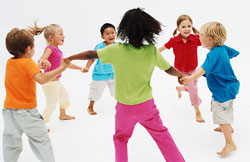 The Environmental Protection Agency said last month that it was considering the application of Swiss company HeiQ Materials Ag to market a new textile coating made from Swiss nanosilver. Referred to as HeiQ AGS-20, the nanosilver material helps to control odor in clothing and is being marketed for use in children’s athletic wear.
The Environmental Protection Agency said last month that it was considering the application of Swiss company HeiQ Materials Ag to market a new textile coating made from Swiss nanosilver. Referred to as HeiQ AGS-20, the nanosilver material helps to control odor in clothing and is being marketed for use in children’s athletic wear.
In some studies, it is claimed that nanosilver has a ten minute kill time for both home and hospital disinfection against deadly pathogens like staph, yeast, and black mold. The EPA has proposed a 4 year conditional approval to allow the agency time to explore the affect of nanosilver on human health as well as environmental trouble.
Nanosilver consists of created, nanometer-scale particles of silver. Some preliminary testing seems to point to the fact that these particles can be toxic to cells that develop into eggs or sperm in mammals. Some recent studies suggest that the almost invisible particles can and do penetrate the skin, may be toxic when inhaled, especially to asthmatics, and can even enter the brain through the blood-brain barrier.
The Environmental Working Group sent a letter requesting that the approval be revoked. From their paperwork:
“The agency’s willingness to introduce this product on the American market is simply baffling. Even as it proposes to grant the Swiss nanosilver coating access to the U.S. market for the next four years under a conditional registration, the agency expresses many qualms about its potential to harm people and the environment. The proposal acknowledges bluntly that EPA ‘lacks information to conduct a complete assessment of the potential risks to human health and the environmental associated with the use of AGS-20,’ that there is ‘considerable uncertainty about the risk assessment’ and that ‘more extensive product chemistry, toxicology, exposure, and environmental data are necessary to… provide an accurate assessment of the risks.’ “
Clothing, especially athletic wear, is often treated with antimicrobial coatings to reduce odor. Nanosilver does kill bacteria on contact, but it is no more effective than washing clothing in a timely fashion. In fact, the minimal advantage of clothing treated with nanosilver does not outweigh the disadvantages, which are massive. When clothing is washed, the nanosilver will remain as a residue in the washing machine, transferring onto other clothing. It will also make its way into the water supply, and reversing the contamination is extremely difficult, if not impossible. The EWG demands that the EPA reevaluate the conditional approval and remove the approval until the EPA can provide solid factual proof that the nanosilver is not dangerous to people or the environment.
What do you think about adding nanosilver to clothing, especially to children’s clothing? Do you think it will add to the function of clothing, or do you think it is just overkill? Would the addition of nanosilver affect your decision to purchase a particular item of clothing?
